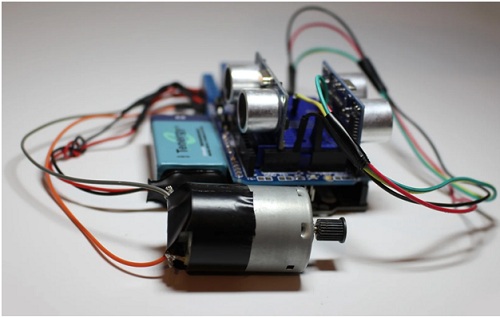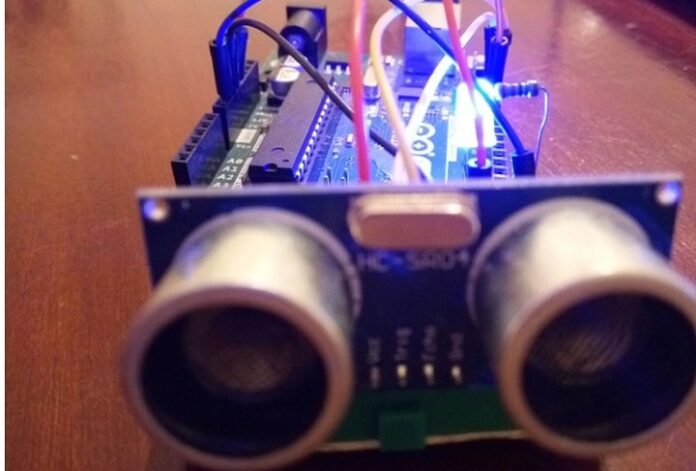Ultrasonic detectors are gadgets that create or detect ultrasound energy. They can be partitioned into three general classifications: transceivers, receivers, and transmitters.
Various ultrasonic sensors are produced in divergent sizes, voltage, accuracy, and prices, to mention a few. Each detecting innovation has its arrangement of extraordinary capacities that permit it to perform dependably in specific regions. In muddy conditions, photoelectric sensors’ light pillar might not get back to the beneficiary because of a covered focal point or reflector.
In any case, ultrasonic sensors flourish in grimy and dusty conditions because sound propagation is unchanged by dust molecules drifting in the aura or holding fast to the detecting face.
Ventures that regularly utilize ultrasonic sensors incorporate packaging, agriculture, and food and beverage, to mention a few. If you search for suitable Electrostatic Ultrasonic Sensors, here are fundamental keys you should stress on in your quest.
Mode.
This machine comes in various modes. Therefore, you should make sure you are choosing a detector that it is suitable for your needs.
There are triple ultrasonic sensor identification modes. This includes retro-reflective, diffuse and thru-beam detection modes. For excellent results you have to choose the right mode for your device.
This can be challenging if you do not the proper knowledge. You have to do extensive research to ascertain the right mode for your machine.
- Retro-reflective Mode – This is one of the modes available in ultrasonic sensors. In retro-reflective mode, radio waves are skipped off a super durable reflector, similar to a wall or a floor.This is a robust approach as it functions ably for difficult items to identify in diffuse mode. This is possible as in the event that the reverberation is lost due to being avoided, the result is set off, and an article is affirmed present.A requisition for a retrospective ultrasonic detector recognizes a vehicle on a sequential construction system. The ground beneath the vehicle is set up, hand to hand, as the vehicle passes under the detector.The reverberation embarks in a moment louder from the ground. The faster reverberation flags that a vehicle has been recognized. One of the impressive advantages of utilizing the retro-reflective mode is that every vehicle is distinguished once.A retro-reflective sensor may distinguish three separate items for every vehicle because there are triple segments of ore and two areas of smooth, skewed, glass on each vehicle that might redirect the reverberation away from the collector.
- Diffuse Mode – This type of mode is the most generally utilized. In this mode, the electro-acoustic transducer sends a progression of heartbeats and utilization the reverberation to decide item existence and distance.An illustration of an expeditious diffuse approach is the identification of vessels on a water chute ride to keep away from impacts. Not all detectors can be used in this mode. For instance, inductive sensors cannot be utilized in this mode.This is because vessels are drifting on the water with holes on one or the other side and are excessively distant from the path. Another sensor that cannot thrive well in this mode is the photoelectric sensor. This is because they are compromised to openness to climate and the changing tones and states of the boats.
- Thru-beam Mode – Another ultrasonic sensor mode that you should know is thru-beam. This mode is subdivided into two constituents. The two components of this mode include the receiver and the emitter.The result is set off when the sound shaft between the two is intruded on. This type has various applications; however, the most popular for this type of ultrasonic detectors are splice detection and double sheet found in the printing business. The producer and beneficiary continually screen the whole stretch of a medium that progresses between them.The double sheet is recognized assuming the reverberation got by the beneficiary from the producer encounters an abatement. A splice is identified when the medium is used up, which would cease the cycle with the goal that the previous sheet and the current sheet can be consolidated.

Output Type
The type of output of the ultrasonic sensor is an essential point that should focus on before settling on any device. There are two outputs in ultrasonic sensors, known as switch point and analog. An ultrasonic detector with analog output has a voltage signal that alters corresponding to the estimated length.
Low and high analog terminus is positioned inside the sensor’s activity range. An item distinguished a good way off in the middle of the two endpoints will compare to a current sign or a voltage alert, which relates to a distance estimation. The switch point is also known by its categories: relay contact, PNP, and NPN.
Switch point detectors function by winding the output off or on at a placed interspace and window. Potentiometers, software, or push buttons determine the set distance. For instance, putting on or off the switch output can demonstrate whenever a railway carriage has departed a station.
Measurement Range
Ultrasonic sensors are manufactured in various dimensions depending on the needs. There are small, medium, and big-sized devices. For instance, there is an ultrasonic detector that measures from 10 to 10,000 mm. This is equivalent to a half-inch to 33 feet.
Like the above ascribes, the proper estimation range for you relies upon your application. The size of the transducers influences the operating range. For example, the bigger the transducer, the more extensive the operating range. In addition, remember that collectively ultrasonic detectors contain dead bands before the detecting face.
Dead bands happen on the grounds that the transducer needs to hose before the reverberations embark or, in all likelihood, the transducer’s ringing will meddle with them. The hosing system sets aside an estimation of effort to happen; thus, protests that are excessively near the transducer might return the reverberation before the transducer is prepared to get it.
Conclusion
Following these vital factors keenly will help you ascertain a suitable ultrasonic sensor. Please make sure you are buying this essential gadget from a trusted dealer.

























